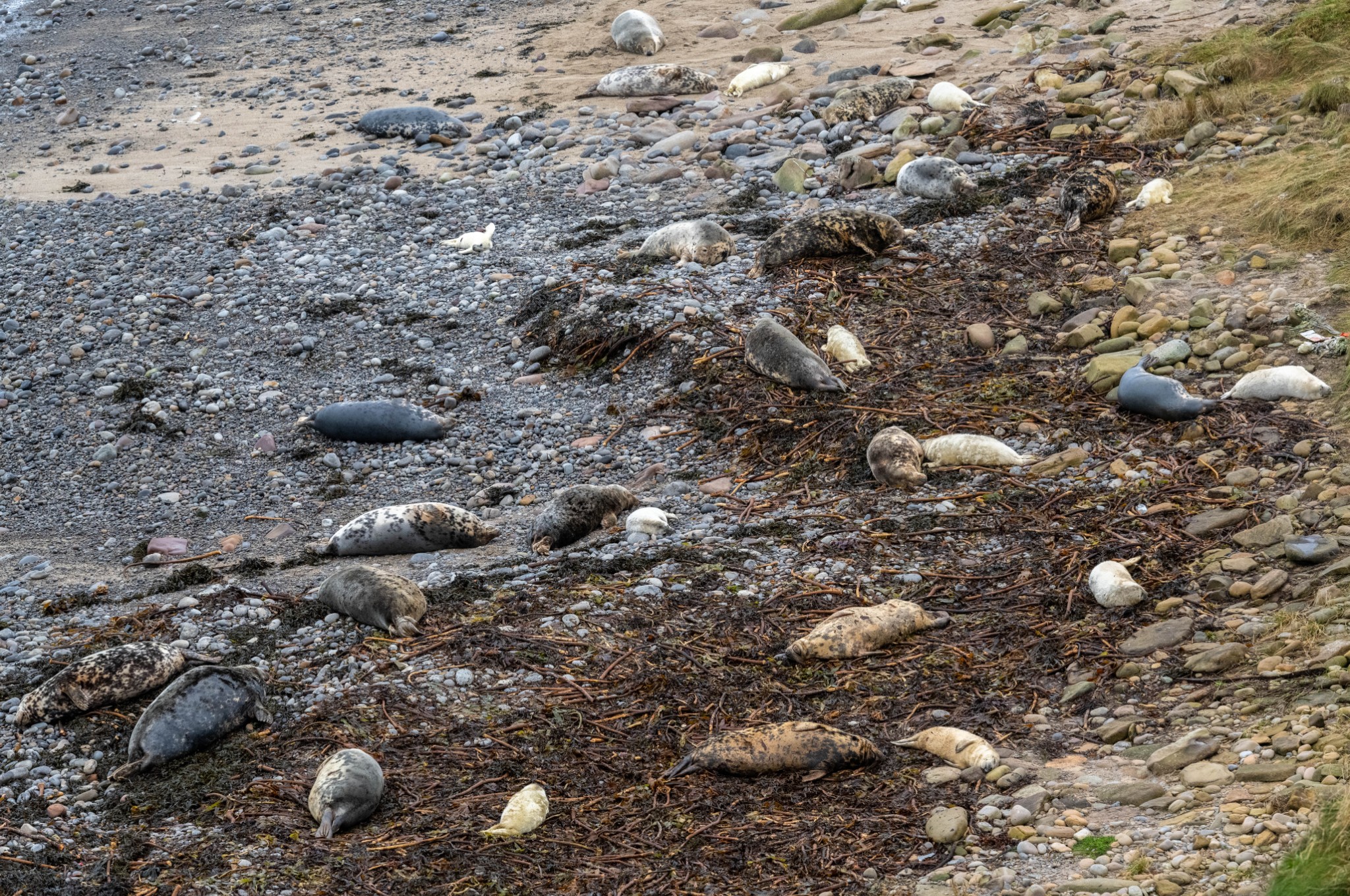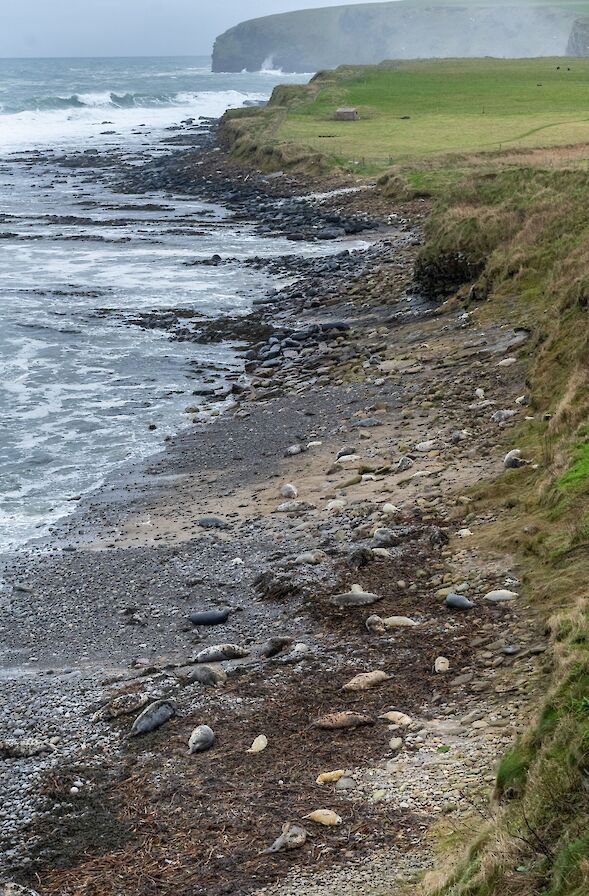I’ve been birdwatching since I was a young boy. I enjoy the creativeness of macro photography and I love the sensation of weightlessness whilst diving, though truth be told the activity itself is a means to an end, that end usually in the form of finding a fish, or a nudibranch or a jellyfish.
But what I love the most, what really fascinates me, is observing animal behaviour - mammals in particular. I’m lucky to be working on a project filming otters at the moment. They are as complex a mammal behaviourally as you’ll find in the UK but that’s part of the excitement. With otters there are often more questions than answers but long periods spent observing them (If you can find them in the first place) can often pay quick dividends. The real thrill is recognising behaviour from previous experience or, even better, recognising it and knowing what will happen next.
Poor weather stopped me from travelling to film the otters recently but this enforced break allowed me to spend time observing and photographing a high point in Orkney’s natural calendar, the grey seal pupping season. The wind has been strong consistently from the south east and I knew that this would generate big seas around the colonies, also known as rookeries, on Orkney’s east coast.
The UK is internationally important for grey seals and the figures make for impressive reading. The Scottish population is thought to be around 106,000 animals (90% of the grey seal population is in Scotland) with perhaps 15% of those in Orkney.
The colony I’m going to visit is considerably smaller in number but no less interesting. I’ve filmed the pupping season for numerous TV productions over the years but have always tended to try and choose the first week of November for peak pupping. Mind you, I’ve only ever seen an actual birth three times, once in Orkney and twice on the Isle of May. This time I’m later but this means there are already lots of well grown pups on the shore below as I cautiously pop my head over the edge of the cliff for my first look.
I never get bored of this scene, the sounds adding to the visuals. The sea has been churned up into almost a chalky pale turquoise, contrasting strongly with the dark brown banks of seaweed cast ashore in the gales, where herring gulls and eider ducks pick delicately amongst it. This is the perfect bedding material for grey seals, soft, and clearly comfortable given the number of them sleeping on it. Dotted below are a multitude different colours of female grey seals, otherwise known as cows. They can appear pale ginger to dark grey depending on how wet or dry they are.
There is no mistaking the pups however, those still suckling and dependent on their mums will stay pure white until they are weaned and start to moult into their juvenile ‘clothes’. With a fat content of 60%, the mother’s milk fuels what seems like the pup’s supercharged development; it is born, fed and weaned in just three weeks.
There are maybe 70 of these white-looking sausages on the shore below, the odd cry coming from a hungry mouth. At first glance all looks calm, but this is not the tranquil scene it appears to be. Space is at a premium here and each mum with a pup has a different level of experience. I often think those calmer mothers do better, finding it easier to just allow safe passage to other mothers either trying to reach their pups after leaving the sea or vice versa.
But more often than not they are feisty. I’m sure it’s a direct result of the mothering instinct of protection. Two females below have become too close to each other and are now belly to belly, front flippers waving in the air, mouths wide open at each other. I can see what is about to happen, one pup seeks the reassurance of its mother but in doing so puts itself in the firing line. Sure enough, it receives a bite to the back of the head and it seems really shocked as the attack continues but manages to haul itself out of danger. Grey seal mums are only interested in their pup, and their pup alone.
As I scan the shore, I can see there is a pup new to the world. Its fur looks yellow and as it turns over the umbilical cord is still visible; the yellow colour will wear off in a few days.
I head further along the shore but move inland a little. I know this stretch of coast well and know that, at certain points, if I follow the most obvious route, I will suddenly appear on the cliff top with the real possibility of startling the seals. If there’s one thing they do not like it’s being spooked, especially at this time of year.
The swell coming in from the east is still considerable and a line of thunderous waves are constantly making their way to the shore. The noise is deafening but more importantly these are dangerous conditions for the new-borns. Luckily, despite the strength of the breaking swell, the tides are neaps and not springs so the splash zone only just hits them, the clever mums having moved to the top of the shore for protection.
The waves aren’t the only thing they have to deal with though. This is of course not only the pupping season but the breeding season. I can see several males loitering in the waves, slowly cruising back and forth looking for any opportunity to mate. On the rocky section of this shore the waves have turned into ‘spume’, also known as sea foam, and a female is deep in it - it looks like she’s in a sea of double cream!
But I can see that’s she’s anxious. A male has approached her and it’s a great opportunity to see their difference in size. Males can reach 300kg in weight and the females up to 200kg, though these mums can lose up to a third of their body weight during the pupping season.
She’s torn between looking after her pup on the shore nearby and fending off the attentions of the male. But the sea decides what happens next. A massive wave slams into both seals, the mother is engulfed in spume and is sucked out into the crashing sea. The male sees his opportunity and launches himself at the female, the sea is so heavy all I can see is the thrashing water as the female tries to escape. Her saviour comes in the shape of another male, no doubt attracted by the commotion. She slips away back to her pup and an almighty battle ensues between the males, which are also known as bulls.
They look a similar size and this is normally when fights occur, when foes are evenly matched. Biting the neck is a favourite tactic, thrashing back and fore and blood is often drawn. Wounds often look serious but the necks of these bulls are specially thickened. Nearby on the banks of seaweed, a bull seal is creating real problems amongst the females. He aggressively chases a fawn-coloured female who raises herself up to meet him face on. I can hear him ‘hiss’ as he reveals a bright pink gape. She isn’t ready to mate and thrashes wildly to escape, straight into the path of a female who bites her hind flippers.
After all this aggression and testosterone, it’s something of a relief to find a quiet geo where a small group of pups are sleeping. One beautifully white pup, perhaps 10 days old at most, is chewing one of its front flippers.
Soon its mother will leave it to fend for itself where it will face a huge challenge - surviving the wild seas of Orkney’s winter.
Find out more about Raymond’s work via his official website. You can also find him on Facebook, Twitter and Instagram.





